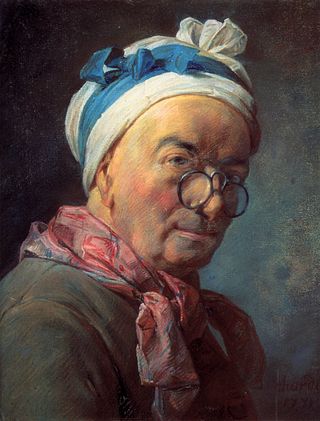
Jean Siméon Chardin was an 18th-century French painter. He is considered a master of still life, and is also noted for his genre paintings which depict kitchen maids, children, and domestic activities. Carefully balanced composition, soft diffusion of light, and granular impasto characterize his work.

Jacint Rigau-Ros i Serra, known in French as Hyacinthe Rigaud, was a Spanish-French baroque painter most famous for his portraits of Louis XIV and other members of the French nobility.
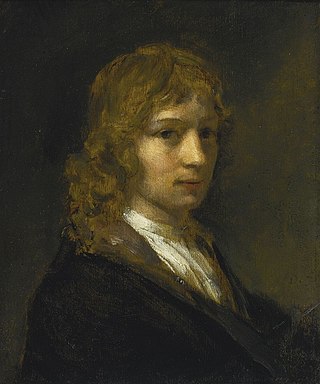
Willem Drost was a Dutch Golden Age painter and printmaker of history paintings and portraits.
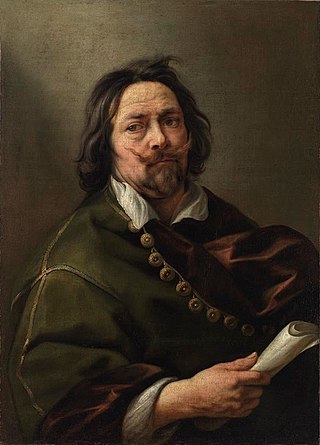
Jacob (Jacques) Jordaens was a Flemish painter, draughtsman and a designer of tapestries and prints. He was a prolific artist who created biblical, mythological, and allegorical compositions, genre scenes, landscapes, illustrations of Flemish sayings and portraits. After the death of Rubens and Anthony van Dyck, he became the leading Flemish Baroque painter of his time. Unlike those illustrious contemporaries he never travelled abroad to study the Antique and Italian painting and, except for a few short trips to locations elsewhere in the Low Countries, he resided in Antwerp his entire life. He also remained largely indifferent to Rubens and van Dyck's intellectual and courtly aspirations. This attitude was expressed in his art through a lack of idealistic treatment which contrasted with that of these contemporaries.
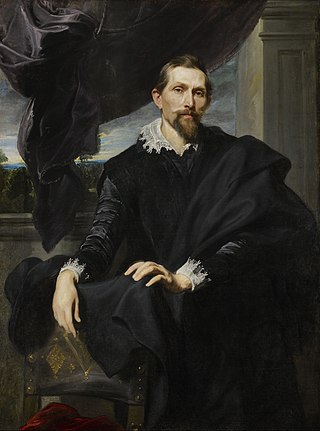
Frans Snyders or Frans Snijders was a Flemish painter of animals, hunting scenes, market scenes, and still lifes. A versatile artist, his works depict all sorts of foods, utensils and tableware and wide assortment of animals. He was one of the earliest specialist animaliers and he is credited with initiating a wide variety of new still-life and animal subjects in Antwerp. His hunting scenes and still lifes engage the viewer with their dramatic and dynamic effects. He was a regular collaborator with leading Antwerp painters such as Peter Paul Rubens, Anthony van Dyck, Jacob Jordaens and Abraham Janssens.
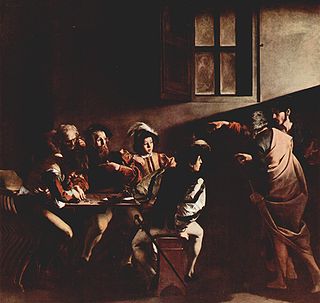
The Contarelli Chapel or Cappella Contarelli is located within the church of San Luigi dei Francesi in Rome. It is famous for housing three paintings on the theme of Saint Matthew the Evangelist by the Baroque master Caravaggio. The paintings were Caravaggio's first major public commission and one that cemented his reputation as a master artist. The chapel commemorates the French cardinal Matthieu Cointerel.

Pieter Boel or Peeter Boel was a Flemish painter, printmaker and tapestry designer. He specialised in lavish still lifes and animal paintings. He moved to Paris, where he worked in the gobelin factory and became a painter to the king. Pieter Boel revolutionized animal painting by working directly from live animals in a natural setting. He thus arrived at representations of animals showing them in their natural, characteristic poses. He had many followers in France.

Claude Vignon was a French painter, printmaker and illustrator who worked in a wide range of genres. During a period of study in Italy, he became exposed to many new artistic currents, in particular through the works of Caravaggio and his followers, Guercino, Guido Reni and Annibale Caracci. A prolific artist, his work has remained enigmatic, contradictory and hard to define within a single term or style. His mature works are vibrantly coloured, splendidly lit and often extremely expressive. Vignon worked in a fluent technique, resulting in an almost electric brushwork. He particularly excelled in the rendering of textiles, gold and precious stones.

Jacob Symonsz. Pynas was a Dutch Golden Age painter and draughtsman. He is best known for having briefly taught the painter Rembrandt in 1625.

The Palais des Beaux-Arts de Lille is a municipal museum dedicated to fine arts, modern art, and antiquities located in Lille. It is one of the largest art museums in France.

Mercury and Argus is an oil painting on canvas executed ca. 1620 by the Flemish painter Jacob Jordaens. It is in the collection of the Museum of Fine Arts of Lyon. It is the first of many versions that Jordaens painted of Ovid's rendering of the mythological story of the murder by Mercury of the giant Argus. Some of the other versions depict other scenes of the story.

Yonker Ramp and His Sweetheart is an oil-on-canvas painting by the Dutch Golden Age painter Frans Hals, painted in 1623 and now in the Metropolitan Museum of Art, New York City. The painting has also been titled as Young Man and Woman in an Inn or Portrait of Pieter Ramp.

St. Matthew is an oil-on-canvas painting by the Dutch Golden Age painter Frans Hals, painted in 1625 and now in the Odesa Museum of Western and Eastern Art, Odesa.

St. Mark is an oil-on-canvas painting by the Dutch Golden Age painter Frans Hals, painted in 1625. It was purchased by Russian philanthropist Alisher Usmanov from the art dealer Colnaghi, London in September 2013 for the Pushkin Museum and donated by him to that museum in November that year, where it still hangs.

Helena Fourment with Children is a c.1636 painting by Peter Paul Rubens, showing his second wife Helena Fourment with their son Frans in her arms and their daughter Clara Johanna standing to their left. It was acquired by Louis XVI of France in 1784 and is now in the Louvre Museum in Paris.

The Ray of Light, also known as Le Coup de Soleil, is an oil on canvas painting by the Dutch painter Jacob van Ruisdael. It is an example of Dutch Golden Age painting and is now in the collection of the Louvre Museum.

Saint Matthew and the Angel is an oil painting on canvas by the Dutch master Rembrandt. It is an example of Dutch Golden Age painting and is now in the collection of the Louvre.
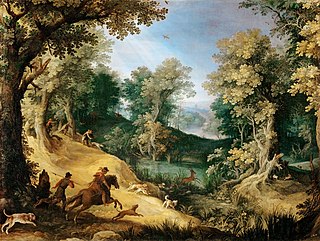
Stag Hunt is an oil on canvas painting by Flemish painter Paul Bril. It was probably painted in the 1590s, and is currently housed at the Louvre in Paris. The painting was once part of the collection of Louis XIV.
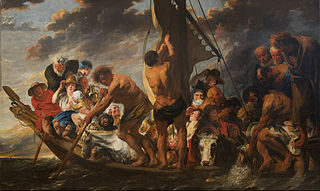
The Tribute Money. Peter Finding the Silver Coin in the Mouth of the Fish is an oil painting by Flemish artist Jacob Jordaens created some time between 1616 and 1634. It is in the collection of the National Gallery of Denmark in Copenhagen. It depicts the story of Jesus sending the apostle Peter to find a silver coin in the mouth of a fish as recounted in the Gospel according to Matthew 17:24-27. The composition was referred to as the "Ferry Boat to Antwerp" by the 17th-century German art historian and painter Joachim von Sandrart who interpreted the composition as a genre scene showing the ferry boat to Antwerp setting off from the jetty.
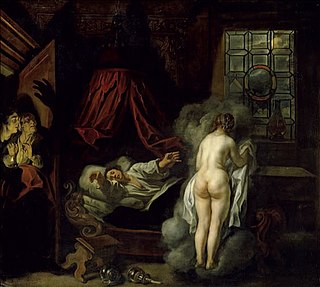
Nocturnal appearance or Night vision is a painting made by Jacob Jordaens around 1650. It is in the collection of the Staatliches Museum Schwerin. The title of the painting is also given as A dream. The meaning and subject of the painting depicting a nude woman seen from the back in a dark bedroom with a man asleep on a bed and two onlookers behind a half open door are still a matter of contention among art historians. A second version of the painting was at the Thore (Burger) sale in Paris on 1892, then in the van Hall sale in Antwerp in 1836 and finally in 1905 it was in Paris with art dealer Franz Kleinberger who exhibited it in Antwerp.




















